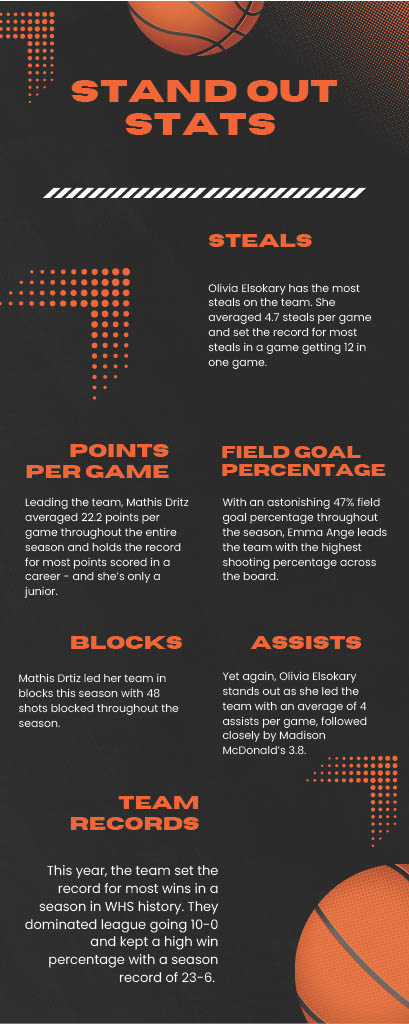Going to see a movie with one’s family is a time–honored tradition across many households in America. However, when fall rolls around, having a family–friendly experience gets
exponentially more difficult as every available advertising outlet is slammed with the telltale characteristics of horror media blood splattered across every screen and screams echoing from every speaker.
For horror fans, autumn is the best time of the year, especially the months leading up to Halloween. August and October are the top months of the year for horror movies to be released, according to horror media website wheresthejump.com. But when horror media isn’t up one’s alley, it can feel like an incredible trial just to move through the modern digital world without being jumpscared at every turn.
The reasons for the horror boom are understandable. Coming out of a worldwide pandemic, some people are more predisposed to wanting media that confronts their fears or scares them, so they can move through it, according to Angela Lavoipierre in an article for abc.net. For some, the satisfaction comes from being confronted with a nightmarish situation and then getting to walk away unharmed, allowing people to feel all of the emotions associated with a life–threatening encounter without actually being in real danger.
That’s fine for people who can utilize that kind of processing mechanism. However, for those who can’t, being constantly inundated with overdramatized tales of blood and guts is not just disturbing but can also sometimes be genuinely traumatizing (or re–traumatizing).
“The psychological mechanisms activated when [people] watch scary movies has the potential to cause long–term effects on our mental and physical well–being,” said psychotherapist
Antonieta Contreras in an article entitled Exploring the Effects of Frightening Films. This theory is even more relevant for people who are exposed to horror media against their will. Not everyone likes being scared, and particularly prevalent horror tropes can often revolve around real–life trauma that people have actually experienced. Being constantly reminded of those situations in a fictional setting, even if those reminders are just a few seconds long, can be psychologically damaging.
Beyond just the scare factor of horror media, there are also other elements of the genre that can be irksome when constantly brought up. Horror has long been known to contain stereotypes depicting a number of minority groups in unflattering and often, genuinely hurtful ways. Although some have gone out of their way to reclaim those stereotypes, such as the growing feminist
horror movement, others would rather not engage. It can very quickly become wearying when one cannot seem to escape horror messaging all around them.
None of that is to say that horror fans should be begrudged their right to a good scare. The problem for those who choose not to partake in the scare lies in the fact that horror is no longer
a niche; it’s pushed its way into advertising spaces where people who don’t want to see it are forced to.
It’s okay not to like horror movies or TV shows, just like it’s okay not to like any other genre of media. However, where the division falls between horror and every other genre, is the reality
that horror is the only one that is constantly forced on to people who don’t care for it. It is much
easier for people who dislike action movies or anime or country music to avoid those things than
it is for the easily scared to avoid horror media.
It’s possible that the root of the issue lies with advertising itself. When one cannot watch a TV program for longer than 20 minutes without at least a handful of ads slotted in to interrupt the session, maybe it’s just inevitable that there will be ads that one does not like. When everything from news articles to video games to recipes are plastered with promotions, perhaps it is simply impossible to avoid frightening content.
But one can acknowledge the overall prevalence of advertising without discrediting the fact that the horror genre has gotten increasingly pervasive over time.
At its conception, horror was not received well. As movie makers moved away from adapting scary stories to film and, instead, created terrible tales exclusively for the screen, the general public’s response was revulsion and terror. The most notable example of a poorly received horror movie is the 1932 film Freaks, which was so terribly emergent for its time that it eventually ended up banned in the UK for 20 years. It is possible that Freaks was so poorly received because the plot revolved around a ‘deformed’ group of sideshow performers, but it is much more likely that people just did not desire to be confronted with any imagined terrible scenarios, as their quality of life was at an upswing.
However, following World War 2, the general public was more favorable to horror media. This illustrates the phenomena of people searching out darker entertainment as their real lives grew darker, one of the greatest catalysts for horror becoming an established genre. With each successive worldwide crisis that would succeed the war, directors would only have more and more encouragement to make horror movies as the public opinion toward them grew to be more and more favorable.
The trend has steadily trailed both horror enjoyers and dislikers into the 21st century, where streaming services and social media have only worsened the pervasiveness of horror. Despite this, the situation isn’t hopeless. Since so much advertising is “smart” these days, it wouldn’t be so hard to allow people to filter horror advertising on their chosen platforms. Would it really be so much to ask for advertisers to keep a tighter leash on where their blood splatter lands?


























